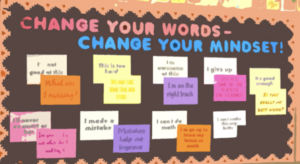What I'm hearing
Here’s a quick overview of where I think the Department of Education is headed and a couple of the themes you’ll hear about tomorrow.
Goals/Focus
1.Best in the world in college completion
2. Top of TIMSS by end of decade
3. Big STEM push
Schedule for ED actions
1. Broad themes during State of the Union
2. Blueprint as part of the 2011 budget on 2.01
3. Detailed reauthorization plan with possible March legislation aiming for a bipartisan bill
ESEA Accountability
1. Focus on college/career ready
2. Replace AYP with an accountability framework focused on academic growth
3. 2014 goal of universal proficiency goes away
Interventions/Rewards:
1. Based on the “tight on goals, loose on means,” the ESEA draft will include
- financial rewards for high performing schools
- aggressive interventions for the 5% lowest performing schools (similar to RttT and SIG)
- flexibility for the middle 80% or so to select the interventions they feel will help them improve student growth
2. No sense yet of what will be expected of schools in terms of performance targets (or who sets them) and what failing to meet a target means in terms of interventions (e.g. public school choice, SES)
3. New frame for student supports that incorporates extended learning time and targeted learning
4. More competitive grants
Budget:
1. $1.3 billion for another phase of RttT with an LEA competition added
2. Budget will also request additional funding for I3
3. Effort to consolidate programs into thematic funding streams –being less prescriptive, funding fewer programs, but doing them better
4. Termination of smaller programs and a small overall increase in total education funding
And
1. Look for encouragement competency-based pilots and for portable funding (i.e., money follow the student)
2. Like draft language, i3 grants will still have three categories at $5m, $30m, $50m
Editorial
Concerns about midterms are overblown—ESEA needs to be bipartisan anyway. ED should wait and lock in gains from RttT rather than accept a bad bipartisan deal that weakens accountability. Of particular concern would loss of disaggregated data and a basic school accountability framework under the heading of ‘local flexibility.’
As RttT has demonstrated, shifting 10% of the Title programs to competitive grants would continue to fuel innovation. More focused research (in conjunction with NSF and IES) would also be productive.
And, like Energy, Health, Defense, and Transportation, the Department of Education should encourage private participation. There is $1b of private equity in the queue for Indian education; the investments will spur innovation, build quality and spread access. The same would be true in the US if the feds and states encouraged public-private partnerships.
I hope the President addresses small business in SOTU–that’s where the jobs recovery will come from. In education, we make it hard for entrepreneurs to participate, but they will invent the future and put folks to work doing it.








0 Comments
Leave a Comment
Your email address will not be published. All fields are required.